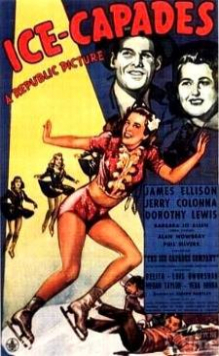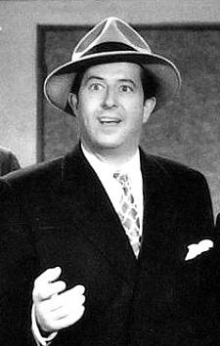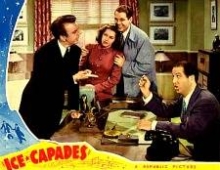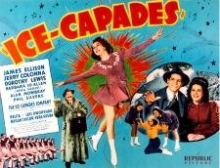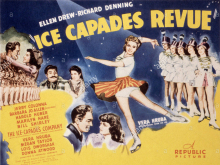Phil Silvers - At The Movies
We take a look at some of the feature films that Phil appeared in during his illustrious career. First up is a feature on Phil's venture into the world of the Carry On series....
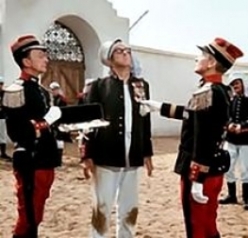
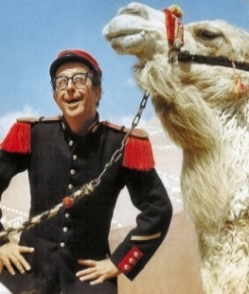
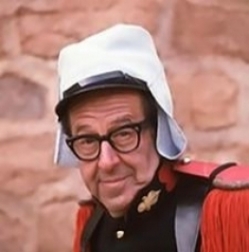
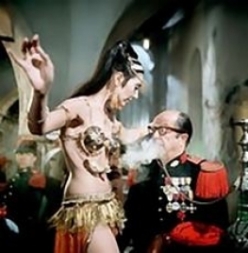
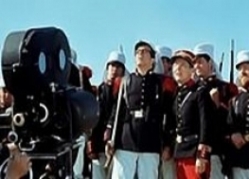
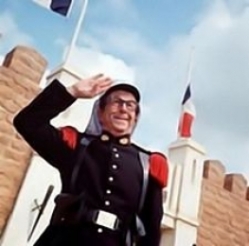
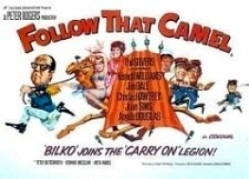
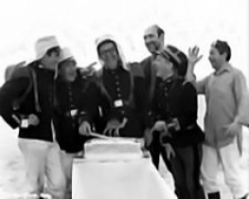
Follow That Camel
(aka Carry On...Follow That Camel)
(US title....Carry On In The Legion)
Directed by Gerald Thomas
Produced by Peter Rogers
Screenplay by Talbot Rothwell
Music by Eric Rogers
Production Manager Jack Swinburne
Cinematography by Alan Hulme
Edited by Alfred Roome
Distributed by The Rank Organisation
Release date 1967
Running Time 95 minutes
Phil Silvers as Sergeant Ernie Nocker
Kenneth Williams as Commandant Maximillian Burger
Jim Dale as Bertram Olliphant 'Bo' West
Charles Hawtrey as Captain Le Pice
Joan Sims as Zig-Zig
Angela Douglas as Lady Jane Ponsonby
Peter Butterworth as Simpson
Bernard Bresslaw as Sheik Abdul Abulbul
Anita Harris as Corktip
John Bluthal as Cpl.Clotski
William Mervyn as Sir William Ponsonby
Peter Gilmore as Sir Humphrey Bagshaw
In 1958 Peter Rogers and Gerald Thomas launched the Carry On film series with Carry On Sergeant. The films soon became one the British film industry's lucrative, popular and most enduring film series.
In 1966 the Rank Organisation took over the distribution rights to the series. They were keen to launch the films in the US market and took the unusual step of dropping the Carry On prefix. The first film produced was Don't Lose Your Head. The second film to be produced (originally titled Carry On Bo!) was Follow That Camel, a parody of the Beau Geste story.
The role of Sgt. Nocker had originally been written for Sid James, but Sid elected not to appear in the film as he was still recovering from a mild heart attack. He was also committetd to his television show George & The Dragon.
At this point Rank saw it as a smart move to involve an American comedian in the film as this would make it easier to sell to the US market. Peter Rogers was not entirely convinced by the idea. "It was the distributors idead to have an American in the series, which I didn't think would work anyway. It worked all right, but it stuck out like a sore thumb. Comics you see, like Phil, stick out like a sore thumb amongst actors playing comedy, which is what the Carry On team were. That's one of the secrets of casting these sorts of films, not to have comics."
Several comedians were discussed, including Woody Allen but it was eventually decided to approach Phil Silvers. Sgt. Bilko had been a major success in Britain and was still extremely popular. The hope was that the inclusion of Phil in the cast would attract both US and UK audiences.
For most of his life Phil had been a self-confessed Anglophile and was delighted to have been offered a part in the film. In an interview in 1967 Phil said "I play a Sergeant...something new to me! Whenever the Hollywood studios would offer me a part as a Sergeant I would turn it down because it was too much like the Bilko series. But in this picture I'm in the Foreig Legion. It gave me the chance to come to England to work with such splendid actors as Jim Dale and Kenny Williams."
Phil arrived in England in April, 1967. He was contracted to work on the film for ten weeks at a salary of £30,000. As well as his salary, Phil received first-class return air-fare to Los Angeles and a stay at the sumptous Dorchester Hotel. Phil sent a telegram to Peter Rogers which read: "On arrival to my little cell at the Dorchester, there was a manifestation of your complete decency. The fruit, of course, was lovely. I am most grateful to you and it is my purpose to contribute to this picture something matching your warmth towards me!"
Although most of the cast, noticeably Jim Dale and Bernard Bresslaw, were excited to be working with Phil, his arrival was not welcomed by one of the series longest serving members....Kenneth Williams. When Phil began filming he made it known that he favoured the use of 'idiot boards' - his lines for a scene were written on cards and then held up off-camera for him to read whilst performing. This was a common practice in the American Film and Television industry (notable exponents included Bob Hope, Jack Benny and Marlon Brando) but not so well-used in the UK. Kenneth Williams took it as a personal affront and considered it to be highly unprofessional. " I had a go at Phil Silvers." said Kenneth "I was amazed. The first thing he asked for when he arrived on set was the 'idiot board'"
Phil was deeply upset at Kenneth's reaction. Ever the trouper, Phil turned up on set the following day and knew his lines back to front and completed his scenes without using the 'idiot board'. Kenneth was deeply appreciative of Phil's efforts and the two became more at ease with each other for the remainder of the shoot.
Jim Dale recalls that Phil was having problems with his eyesight during the shooting of the film. "Phil was having trouble with his sight. As well as his trademark glasses he was also wearing contact lenses. Many times Phil, Peter Butterworth and myself would be on our hands and knees looking for a lost contact lens in the sand!"
For cast member Bernard Bresslaw the chance to work with Phil proved to be a great honour. He spent many a happy hour listening to Phil's stories about his Burlesque, Hollywood and Broadway days. Phil also spent a great deal of his time with co-stars Jim Dale and Peter Butterworth. Phil knew Peter already as they had met and worked together in A Funny Thing Happened On The Way To The Forum in 1966.
Phil personally enjoyed working on the film, despite the initial problems with Kenneth Williams and the severe eye trouble he suffered whilst shooting, and it proved to be an enjoyable experience. "I've never worked in more congenial surroundings." he said "The director is a delight...Gerald Thomas! If the British audiences enjoy watching this film as much as I've enjoyed making it then we're in for a big hit. I hope they ask me back!"
Location filming took place at Camber Sands in Sussex, during April and May, and the cast and crew spent a very happy three weeks filming there. No Carry On film had ever enjoyed the luxury of three weeks location filming! All the studio and interior work was done at the home of the Carry Ons, Pinewood Studios. During location filming, Phil celebrated his 56th birthday and was presented with champagne and a huge birthday cake from the cast and crew.
It's A Mad, Mad, Mad, Mad World
Produced & Directed by Stanley Kramer
Story & Screenplay by William & Tania Rose
Music by Ernest Gold
Cinematography by Ernest Laszlo
Edited by Fred Knudtson
Sound by John Kean
Shooting Time 166 days
Running Time 210 Minutes
Release Date 7th November 1963
Edie Adams as Monica Crump
Milton Berle as J. Russell Finch
Sid Caesar as Melville Crump
Buddy Hackett as Benjy Benjamin
Ethel Merman as Mrs. Marcus
Dorothy Provine as Emeline Marcus-Finch
Mickey Rooney as Dingy 'Ding' Bell
Dick Shawn as Sylvester Marcus
Phil Silvers as Otto Meyer
Terry-Thomas as Lt. Col. J. Algernon Hawthorne
Spencer Tracy as Captain C. G. Culpepper
Jonathan Winters as Lennie Pike
Stanley Kramer was a respected Hollywood producer/director with such powerful dramatic films as High Noon, The Caine Mutiny, Inherit The Wind and Judgement At Nuremberg to his name. A fervent admirer of comedians and comedy films, he had harboured a desire to make the ultimate cinematic comedy extravaganza featuring the greatest living exponents of both film and television comedy.
British scriptwriter William Rose, noted for his script for the successful British comedy Genevieve, sent him a ten page outline for a chase movie movie called Something A Little Less Serious. Stanley Kramer realised there was a big movie with a big story waiting to be made.
Following further discussions, Rose supplied a new screenplay, now called One Damn Thing After Another. Several meetings later and with the script action now taking place not in England but the US, the script now bore the title It's A Mad World. Both Kramer and Rose felt that the title needed a little something more, to emphasise just how big and crazy the film was. Hence they simply kept on expanding until they arrived at It's A Mad, Mad, Mad, Mad World.
Stanley approached virtually every major film and television comedian, hoping to involve the cream of Hollywood's comedy elite both past and present, either in major roles, supporting roles or cameos.
The film sparked huge excitement among the comedy fraternity. Anybody who was anybody wanted a role in the film. Stanley Kramer secured the services of Sid Caesar, Edie Adams, Dorothy Provine, EthelMerman, Terry-Thomas, Jonathan Winters, Dick Shawn and the inimitable Phil Silvers.
Notable cameo roles were filled by the likes of Jimmy Durante, Jack Benny, Jerry Lewis, Buster Keaton, The Three Stooges, Paul Ford, Zazu Pitts, Don Knotts, Peter Falk, Marvin Kaplan and Arnold Stang.
Filmed in Ultra Panavision 70 and presented in Cinerama, It's a Mad, Mad, Mad, Mad World was released on November 7, 1963, some two weeks before the tragic death of President Kennedy.
The plot revolved around a colorful group of strangers who, having seen convict Smiler Grogan (Jimmy Durante) literally kick the bucket, wind up in a madcap race across California to locate the whereabouts of $350,000 of stolen cash. "It's a story of how a dozen seemingly normal people become involved in a frenzied chase for some buried money." said Stanley Kramer in a 1960's interview. "The momentum escalates to the point of insanity and what happens to them along the way is riotously funny, but the underlying theme...the human motivation for their actions is what makes the story both real and funny".
Amongst all the insanity, Stanley Kramer felt the story needed a central character around whom the madness could unfold. He needed an actor who would be able to portray a world-weary, everyman...someone who the audience would identify with and he found him in Spencer Tracy (who had worked with Stanley in both Inherit The Wind and Judgement At Nuremberg).
Phil was approached to appear in the film. "The idea was to include all the great comics in Hollywood." said Phil. "To be considered alongside the likes of Jonathan Winters, Milton Berle and Sid Caesar meant more to me than any award. At first people said it would never work....eventually everyone wanted to be in it!."
As Otto Meyer, Phil gave one of the film's outstanding performances. He fuses the ideals of Bilko (i.e. the man in it for himself) with the dreams of everyman (i.e.the chance to make an quick fortune). "It was easy for me." said Phil. "I played the same Bilko-type as always. We all felt it was something special as a movie. I knew comics who would've killed to be in that movie."
Phil almost paid the ultimate price to be in the film. During filming of a sequence in which he drives a car into a river, he almost drowned. "They had this scene where I ride my car down into the river and it sinks." said Phil, "I thought my stuntman was going to do it but Stanley said, 'No, your reactions are what will make it funny,' and he was right, of course. The car was on pontoons or some sort of raft, so they could lower it like it was sinking. There were frogmen there to pull me out because I couldn't swim. I almost drowned but it was a great gag."
Marvin Willens, Phil's stunt double on the film, was called upon for extra filming when Phil suffered an injury towards the end of shooting. "I had to chase Spencer Tracy and I pulled a muscle in my groin." said Phil. "It hurt like hell and I was out of action for a few days." (Watch the staircase chase scene and keep your eyes on Phil as Otto Meyer....you'll notice that he keeps turning his face away from the camera...).
For Phil personally, working on the film was a joy. "When Jonathan Winters was on set, you never knew who he was going to turn up as. One day he'd be an African explorer, the next a German Colonel....he was the greatest improvisationist I ever saw. Jack Benny, who for me was the greatest, came in for a day. Terry-Thomas, who I knew from the British comedies was such a delight and a gentleman."
Phil often described the constant hilarity on the set. In one interview he recalled, "The clowning off-screen was as mad as the clowning on-screen. Everbody was doing bits. Jonathan Winters would turn up as different characters. I remember Mickey Rooney up a tree acting out dialogue from Bridge On The River Kwai!Spencer Tracy was a joy. We filmed a couple of scenes together but they were cut from the picture. But mostly it was fun, fun, fun all the way!"
As well as the hilarity and hi-jinks, there was even a card school! When old pal Jerry Lewis turned up to film his cameo, for which he was paid $500, he joined in a running crap game that Phil had organised for the cast and crew and reportedly left the set minus his fee!
Over the years the film has achieved cult status. It has been referenced in many shows including Cheers and The Simpsons. 2001 saw the release of Rat Race from Director and Producer Jerry Zucker. It was meant to be a homage/tribute to Mad World but it lacked the star peformances and the irreverant charm of its illustrious predecessor.
For many years rumours have persisted over the film's running time. The original screening time in November 1963 was reportedly 210 minutes. This was then trimmed to 192 minutes upon general release. Further cuts were made over the years, without Stanley Kramer's approval. In 1991, Stanley Kramer worked on a restored version, with some missing footage and additional scenes for a Laser Disc release.
In 2007 Karen Sharpe Kramer, Stanley's widow, announced plans for a sequel to the original film. The idea for a sequel had first been mooted by Stanley Kramer in 1991 whilst he was working on a Mad World documentary. Sadly Stanley passed away in 2001. The new film, titled It's A Mad, Mad, Mad, Mad, MAD World, would reportedly revolve around the descendants of the original characters who would embark upon another madcap chase involving a huge amount of money. Where possible Karen hoped to feature surviving cast members from the original film (Sid Caesar, Jonathan Winters, Mickey Rooney, Jerry Lewis, Carl Reiner).
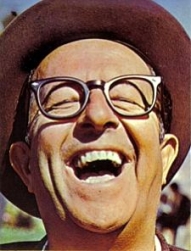
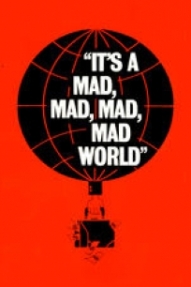
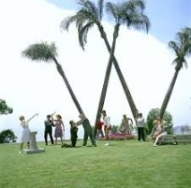
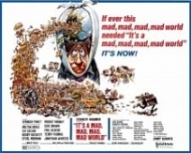
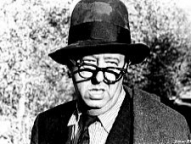
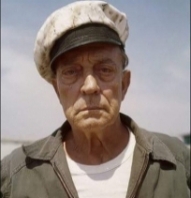
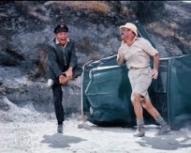
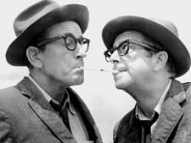
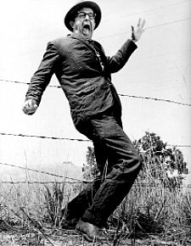
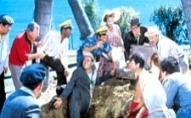
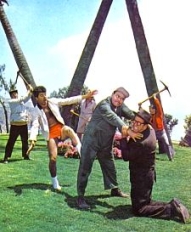
All Through The Night
The following article was written for The British PHIL SILVERS Appreciation Society by journalist Doug Krentzlin.
Back in the 50s, 60s and 70s, rainy day Sundays in the Washington, D.C. area were a rare treat. Because good ol’ Channel 5 (WTTG) had the best collection –
bar none – of great black-and-white movie classics (especially the ones made by Warner Brothers) and they would show four of them in a row on Sundays. (Oh, sure, you could still stay indoors on a gorgeous Sunday and watch the movies, but it wasn’t as much fun.)
On the weekdays, Channel 5 would show the trailers of the upcoming Sunday movies as commercials. I had just seen It’s Mad, Mad, Mad, Mad World at The Villa in my home town of Rockville, Maryland. (Phil Silvers and Jonathan Winters in the same movie? Count me in!) I was probably watching The Adventures of Superman (starring the definitive Superman, George Reeves) when they ran a commercial for a movie I’d never heard of before: All Through the Night (1941).
Humphrey Bogart! William Demarest (Uncle Charlie from My Three Sons)! Jackie Gleason! (Stay calm, Doug, it’s just a movie.) Peter Lorre! Ed Brophy! Jane Darwell! And, finally, (drum roll please) the funniest man on earth, the Sarge himself, Phil Silvers!!! (Don’t tell me to stay calm! I’m in! I am soooo in!) After I stopped hyperventilating, I went to my mother and asked if I could watch The 5 O’Clock Movie this Sunday. Not wishing to see her son commit Hari Kari (or is it Hoot Gibson?), she acquiesced.
It was love at first sight. I thought that It’s a Mad, Mad, Mad, Mad World had just replaced The Wizard of Oz as the greatest movie I’d ever seen, but now I had a new favorite. If you’ve never seen All Through the Night, it’s one of the screwiest films ever made. (In a good sense. Not in a Plan 9 from Outer Space sense.) Imagine Damon Runyon writing Raiders of the Lost Ark as a vehicle for The Bowery Boys, but when Warner Bros. found out that The Bowery Boys had defected to Monogram Pictures (the chumps!), they cast Bogie in the Leo Gorcey role and hired some of Hollywood’s funniest “top bananas” to replace The Bowery Boys. Now you’ve got All Through the Night. In other words, New York hoods vs. Nazi spies in a wacky film noir slapstick comedy. (The actual screenwriters were Leonard Spiegelglass, Edwin Gilbert and Leonard Q. Ross.)
The director Vincent Sherman also had the good sense to counterbalance the clowns in his cast with three of Hollywood’s most formidable villains as the head Nazis: Conrad Veidt, Judith Anderson and, best of all, Peter Lorre. (In a typical irony of the time, both Veidt and Lorre were Jewish.)
Phil Silvers was so young when he made this film he still had some hair on the top of his head. (Not much, but some. I can just imagine his daughter Tracey or one of her sisters pointing to the TV set and saying: “Daddy looks funny with hair!”) Unfortunately, Phil was still considered small-time by the studios (the chimps!), so he’s only in the first five and last ten minutes of the film. (Admittedly, the stuff in between ain’t too shabby.) Phil’s character didn’t even have a name; he’s billed generically as “Waiter.” Luckily, he’s featured prominently in the opening scene and even has the movie’s first line: “Gentlemen, please!”
The “gentlemen” he’s referring to are “Gloves” Donohue’s gang of grifters who are arguing about how to win World War II over coffee and danish in a New York diner. Sunshine (Bill Demarest) has even purchased some toy soldiers and tanks to illustrate his game plan to fellow wise guy Starchy (Jackie Gleason), leading to the following priceless dialogue exchange:
Waiter: The way you’re doin’ it, we’re gonna lose the war.
Sunshine: What?!
Waiter: You’re backin’ us inta another Dunkirk.
Sunshine: Smart guy! Where’d you learn to be a general? In the Bronx?
Waiter: Oh, yeah? I’ve served some of the best authorities of our time; to wit: (counting on his fingers) Gunther, Kaltenbourn, Raymond, Graham, Swing…
Sunshine: Listen, four-eyes, if you don’t keep quiet, I’ll serve ya with a blackout!
Waiter: (pointing to his glasses) Twenty years!
Sunshine: Take those glasses off and I’ll pop you in the nose!
Waiter: Oh, yeah? Well, don’t let that stop ya! I don’t need the glasses… (takes off glasses) Where is everybody? (The gang starts laughing) Hey, where are ya, fellas?
Starchy: Waitta minute, Sunshine, I think the general’s gotta point
Sunshine: What point?
Starchy: When you take inta consideration the carastan on the tagabrue with dive bombers…
Sunshine: I told’ja that the fleet muscles in here, the RAF… What did you say?
Starchy: I said the carastan on the tagabrue are a very serious problem, to say nuthin’ of the larasang fay!
Sunshine: Cut out the double talk and don’t camouflage your ignorance…
Starchy: Listen, we know just as much about dopin’ out this war as you do, you ignoramus!
Sunshine: (picking up toy tank) Ignoramus?! I’ll shove a tank down your throat!
Starchy: (picking up toy cannon) I’ll stab ya with this…
At this point, Phil breaks up the fight because their boss, Gloves (Bogie) has just entered. (“I could hear you boys all the way down to 42nd Street!”) By the way, it seems that all of Gloves’ mob can speak fluent double talk which comes in handy when he and Sunshine impersonate Nazi saboteurs and address a spy rally.
Scenes like this were made possible by director Sherman. As he points out in his audio commentary on the DVD, he had never directed a comedy before, but he had the inspiration to allow the comedians to write their own jokes. According to Sherman, Gleason came in the next day with three pages of jokes and Silvers came in with 20 pages!
We’ll skip the next 90 minutes and cut to the chase, but first let’s stop for one of the script’s best lines. Back in those days, it wasn’t unusual for someone to enter the theater midway through the feature attraction. (Hence the phrase: “This is where we came in.”) In order to bring audience members who just entered up to date, the screenwriters would throw in a couple of lines to sum up The Plot So Far. And in All Through the Night, Bogie has a doozy of a speech that he delivers to leading lady Kaaren Verne at a machine gun pace that rivals James Cagney.
Gloves: Listen, sister, I don’t know what your’re up to, but the cops are waitin’ for me out there with a one-way ticket to the hot seat! You know who killed Joe Denning and you know who killed Miller! You know what’s goin’ on around here! You’re Exhibit A and you’re comin’ with me!
Back to the climax. As Bogie and Demarest address the Nazi rally, Lorre arrives and the jig is up. The Fifth Column boys are about to give the two imposters a taste of Nazi hospitality when every goombah in the Big Apple rushes in and a donnybrook breaks out. Since the Nazis aren’t in uniform, you can’t tell one goon from another without a program.
Not to worry. Our favorite four-eyed waiter has a system to separate the good goons from the bad goons. Whenever a body comes flying his way, he holds up a hand and says: “Heil?” If his “Heil” is returned, he swats them upside the head with a 2-by-4! (A moment that remains refreshingly cathartic even today.) By the end of the brannigan, Silvers has amassed a nice, large pile of unconscious Nazis (which, as everyone knows, are the best kind).
Well, that’s about it. Just sit back and enjoy such extra bonuses as Sid Hickox’s black-and-white photography and the thundering music score composed by Adolph Duetsch. (When the fight breaks out at the end, the music starts quoting “Roll Out the Barrels.”)
Warning: If you watch the DVD, do not repeat, DO NOT listen to the audio commentary! Sherman, bless his heart, has some interesting stories, but “film historian” Eric Lax is a pompous, self-important windbag who won’t shut his piehole long enough to let Sherman get a word in edgewise! You’ve been warned!
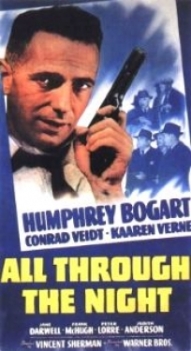
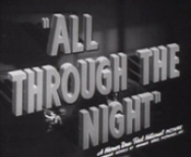
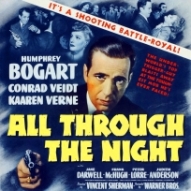
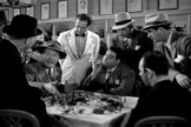
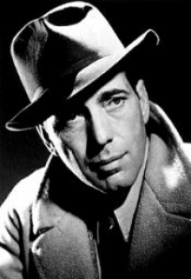
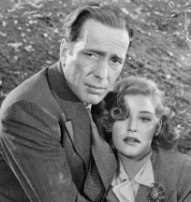
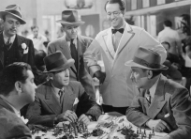
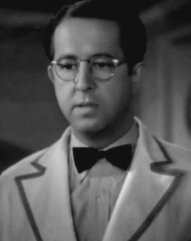
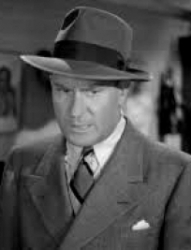
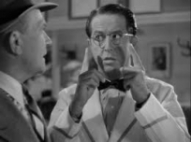
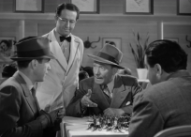
Lucky Me
Directed by Jack Donohue
Produced by Henry Blanke
Cinematography by Wilfrid M Cline
Edited by Owen Marks
Screenplay by Irving Elinson, Robert O'Brien & James O'Hanlon
Musical Numbers by Sammy Fain & Paul-Francis Webster
Running Time: 100 minutes
Release Date: 9 April 1954
Doris Day as Candy Williams
Robert Cummings as Dick Carson
Phil Silvers as Hap Schneider
Eddie Foy Jr as Duke McGee
Nancy Walker as Flo Neely
Martha Hyer as Lorraine Thayer
Bill Goodwin as Otis Thayer
Marcel Dalio as Anton
Hayden Rorke as Tommy Arthur
James Burke as Mahoney
The year was 1954 and Doris Day, who was approaching the end of her contract with Warner Brothers, was signed to star in what proved to be the first musical to be shot in Cinemascope and glorious WarnerColour, Lucky Me.
Miss Day was not altogether happy with the film and had severe reservations about the script. Ever the trouper and not wishing to renege on her contractual obligations, she agreed to take on the role of Candy Williams, a singer and actress who, following the failure of her latest show, winds up stranded in Miami.
Whilst there she meets up with a New York songwriter, played by Robert Cummings, who is casting for his new Broadway show and we witness the problematic romance that develops. The film follows the traditional Hollywood formula of boy-meets-girl and is peppered with some wonderful songs and great set-pieces.
By 1954 Phil Silvers, fresh from his hit musical Top Banana, had been warned by his good friend Jack Benny that the television moguls would be after him. But this was not the case. "Nobody tried to seduce me with glittering TV packages" said Phil. Even at this stage in his career insecurity plagued him and he was willing to take on any work which came his way.
Following his return to the big screen with a theatrical version of his hit Broadway show Top Banana, Phil returned to Hollywood having been offered the role of Hap Schneider in Lucky Me.
"My agent came up with one squeamish movie offer..."It's a lousy script, but Jack Donohue will be the director..." commented Phil. "I went to work in Lucky Me, a squeaky musical. It made me Blinky again - at a higher salary!"
Director Jack Donohue, who got his start in Hollywood initially as a dancer and dance teacher, had a proven track record with musicals. He began working for MGM in 1933 as a dance choreographer and by 1954 had directed and choreographed numerous musicals.
His biggest success to date was Calamity Jane (1953), which also starred Doris Day. Donohue had staged and directed the film's musical numbers. He had also previously worked with Phil on the film version of Top Banana (1954).
Although not altogether happy with his role (as a major Broadway star he loathed the idea of reprising his Blinky role) but when Hollywood came calling not even he could turn down the offer. So it was Blinky in a rug again!
The film also gave him the chance to renew his friendships with Eddie Foy Jnr, Martha Hyer and Nancy Walker from his days in Burlesque. "Eddie, Nancy and Martha...we all knew each other from the old days and we just had fun talking about our days in Burlesque!" said Phil.
The films musical numbers were written by composer Sammy Fain and lyricist Paul-Francis Webster. They had won the Oscar for Best Original Song the previous year with Secret Love. Doris Day performed the song to glorious effect in Calamity Jane (1953).
Robert Cummings was cast as the romantic lead opposite Doris Day. He had enjoyed a successful film career playing light comedy and romatic roles. However, he was not a singer and his vocals in the film were provided by Hal Derwin.
The film also saw the debut of one Angie Dickinson. Miss Dickinson rose to fame in 1959 when she appeared opposite John Wayne in Rio Bravo and went on to enjoy a hugely successful career in both films and television.
Lucky Me was released in the US on April 9, 1954. It enjoyed moderate success and although not considered as one of the great Hollywood musicals it boasts a fine cast and some wonderful musical numbers.
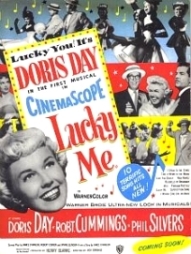
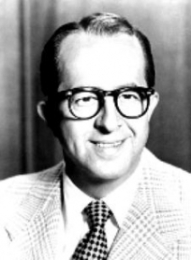
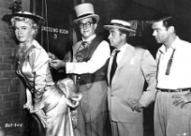
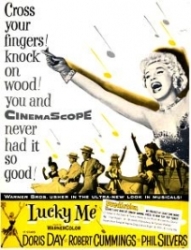
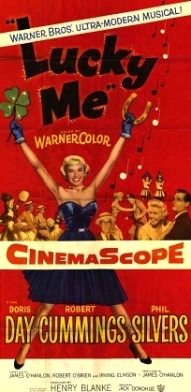
A Funny Thing Happened On The Way To The Forum!
Back in the 1940s, comedian Phil Silvers and his old buddy from his burlesque days, Rags Ragland, used to do a routine at Hollywood parties called “Paul Robeson.” In it, the black actor/singer is having a conversation with composer Jerome Kern about the score of Showboat. The joke was that Robeson didn’t want to sing the iconic “Old Man River.” He wanted to sing “Captain Andy,” the only song in the show that didn’t become a hit, instead. When Silvers was accused of racism, he explained that the joke wasn’t at Robeson’s expense, but was aimed at singers in general. “Give a singer a choice and they’ll always pick the wrong song,” said Silvers.
Alas, Silvers could have made the same point about comedians. When he was offered the part of conniving Roman slave Pseudolus, a role he was born to play, in the Broadway musical A Funny Thing Happened on the Way to the Forum in the early 1960s, he turned it down because he wasn’t crazy about Stephen Sondheim’s songs and had been offered a role in the musical Do-Re-Mi that had been specifically tailored for his talents. (Do-Re-Mi wasn’t a bad show and did introduce the standard “Make Someone Happy,” but since it was a vehicle primarily designed with Silvers in mind, it has never been revived without him, unlike Forum which has become one of the most oft-performed musical comedies ever.)
The role of Pseudolus eventually went to Zero Mostel who had just starred in the major hit Fiddler on the Roof. Forum was a huge success and Mostel won a Tony for Best Actor for his performance. Other Tonys awarded to Forum were Best Musical, Best Book (by Bert Shevelove and Larry Gelbart), Best Supporting Actor (David Burns) and Best Director (George Abbott, who had also directed Silvers in High Button Shoes).
Therefore, when Richard Lester, who had helmed the two Beatles musicals A Hard Day’s Night and Help!, was assigned to direct the 1966 film version of Forum, it’s understandable that Mostel would be the first choice to play Pseudolus. (The only other holdover from the original cast was Mostel’s old friend Jack Gilford repeating his role as fellow slave Hysterium.)
Silvers did, however, get the second banana role of courtesan dealer (i.e., pimp) Marcus Lycus as a consolation prize, which turned out to be a kind of good news – bad news joke for him. The good news was that Lester and his screenwriters, Melvin Frank (who also produced the movie) and Michael Pertwee, expanded the role for Silvers, adding new one-liners and comic routines for him. The bad news was that Lester, who wanted the film to have the illusion of historical accuracy, wouldn’t let Silvers wear his trademark horn-rimmed glasses on-camera, a problem made worse by the fact that he was suffering from cataracts at the time and, as a result, had no depth perception.
An American-born filmmaker who had spent most of his professional career in England, Lester filled out the cast with some of Britain’s most talented actors – Michael Hordern as dirty old man and hen-pecked husband Senex, Patricia Jessel as his battle-axe wife Domina, Michael Crawford as Senex’s callow son Hero, Annette Andre as naïve courtesan Philia, Leon Greene repeating his performance from the London production as pompous, egotistical warlord Captain Miles Gloriosus and Lester’s friend, beloved comic actor Roy Kinnear as the Gladiator Instructor (a role created especially for the film). (Hordern was primarily known as a dramatic actor and best remembered up to this time as the Ghost of Jacob Marley in the Alistair Sim version of A Christmas Carol. He had never done a musical comedy before, but his charming rendition of “Everybody Ought to Have a Maid” remains one of the film’s highlights.)
For the small but crucial role of doddering, near-sighted oldster Erronius, Lester cast his idol, legendary comedian and filmmaker Buster Keaton. (Forum would turn out to be his last movie.) He then took his cast and crew to film on location in Spain which stood in for ancient Rome. (Unlike dramatic epics such as Ben Hur and Spartacus, Forum looked as muddy, dirty and unkempt as the real ancient Rome probably was. This was most likely a nod to Keaton’s masterpiece The General which is still, by far, the most historically accurate film ever made about the Civil War.)
To this day, however, many theater purists have a problem with Lester’s Forum. It’s the usual complaint: the filmmaker “changed things”; which is to say that Lester actually adapted the show to the new medium rather than making an unimaginatively slavish duplication of the original, adding lots of sight gags, slapstick routines and a climatic chariot chase that were not in the stage version. Lester’s most controversial decision was to eliminate two-thirds of Sondheim’s score, but truth be told, only half-a-dozen songs used to be the norm for Hollywood musicals before they became elephantine behemoths like My Fair Lady, Gypsy and Oliver! Indeed, it was movie audiences’ impatience with these three-hour plus road show “specials” that motivated Lester to take a more streamlined approach to Forum (which only runs an hour and thirty-seven minutes).
One element of the film version of Forum that was definitely an improvement over the stage version was the orchestrations by Ken Thorne, Lester’s regular composer, which were far more melodic and nuanced than the original orchestrations by Irwin Kostel and Sid Ramin. In addition, Thorne also composed the excellent background score. Two particular stand-outs from the score are the climatic chase scene music, which is orchestrated in the style of Beethoven, and the end credits music, which is a swinging big band arrangement of a medley of the show’s songs. (Thorne deservedly won an Oscar for his work on Forum.)
Forum gets off to a splendid start by running the opening credits over Mostel’s rendition of Sondheim’s ode to the clowns of the world, “Comedy Tonight,” accompanied by an increasingly fast-paced montage of sight gags from the film. (One lovely gag that was shot especially for this montage has Keaton standing on a step and raising his arms as if to fly a la Superman only to fall to the floor still standing.)
Pseudolus then establishes the setting (“a less fashionable suburb of Rome”) and how the story revolves around the inhabitants of three houses: Erronius (“a befuddled old man abroad now in search of his children stolen in infancy by pirates”), Marcus Lycus (“a buyer and seller of the flesh of beautiful women – that’s for those of you who have absolutely no interest in pirates”), and Senex, his wife, his son and slave to his son, one Pseudolus by name. Pseudolus (“the lyingest, cheatingest, sloppiest slave in all Rome”) has one priority in life: becoming a free man. And since Senex and Domina are out of town visiting her mother, this is the perfect time to hatch a scheme.
After figuring out that his young master Hero has fallen in love with Philia, one of Lycus’ courtesans, Pseudolus offers him the following bargain: he’ll obtain Philia for Hero in exchange for his freedom. Hero agrees. The next segment is Silvers’ first extended scene beginning with an extremely funny moment where Lycus admonishes a eunuch in the brothel’s bathing pool: “If I've told you once, I've told you a hundred times: do not fan the girls when they're wet! But you'll never learn, you'll be a eunuch all your life.”
Pseudolus and Hero enter. Pseudolus tells Lycus that he just inherited a fortune, bought his freedom and is in the market for a female companion. With a clap of Lycus’ hands, the girls, including Tintinabula and the Gemini Twins, start strutting there stuff for Pseudolus. (Offered a bottle of wine, Pseudolus asks: “Was 1 a good year?”) The ladies are certainly tempting, especially Gymnasia (Inga Neilsen), a mute from the Isle of Silent Women, with whom Pseudolus is immediately smitten.
Pseudolus inquires about Philia, only to be told by Lycus that she’s promised to a Roman warrior, Captain Miles Gloriosus. When Lycus mentions that Philia is from Crete, Pseudolus tells him that Crete is having an epidemic of the black plague. Lycus says that Philia is well, happy and smiling. “Don't you know?” Pseudolus asks, “When they start to smile, the end is near. I hear it's lovely on Crete. Everyone lying there... smiling.”
Pseudolus then tells Lycus that he’s already had the plague and is immune to it. Then, out of the kindness of his heart, he offers to look after Philia at Senex’s house until the Captain comes to claim her. Afraid that she’ll infect the other courtesans, Lycus takes him up on the offer.Philia and Hero immediately hit it off and sing the loopy love ballad, “Lovely.” Despite her love for Hero, Philia won’t run away with him because she’s promised to Gloriosus. (“An honest virgin! What a terrible combination,” Pseudolus bemoans.) Plan B: slip Philia a sleeping potion. Pseudolus has all the ingredients for a sleeping potion except one: mare’s sweat.
So Pseudolus and Hero go separate ways, looking for a sweating horse. As soon as they leave, Senex shows up. (He invented an excuse to return home.) Philia assumes he’s the Captain and offers herself to him.
Philia: But you must know something.
Senex: Yes?
Philia: Though you may have my body, you shall never have my heart.
Senex: Well, you can’t have everything.
Pseudolus comes back (“Would you believe it? There was a mare sweating just two streets from here,” he tells the audience.) and catches Senex and Philia kissing.
While Philia goes inside the house, Pseudolus tells Senex that she’s the new maid they just hired. Senex is delighted and he sings “Everybody Ought to Have a Maid” joined by Pseudolus, Lycus and toadying slave Hysterium. Senex is about to show the new maid her duties, but Pseudolus pours the mare’s sweat on him and Hysterium suggests that his master take a bath at Erronius’ vacant house.
Of course, as soon as Senex enters Erronius’ abode, right on cue, Erronius returns. Pseudolus impersonates a soothsayer, tells Erronius that his house is haunted and that he must exorcise the spirit by “running seven times around the Seven Hills of Rome… slowly.”Off Erronius goes.
Two more pieces of bad news. An emissary tells Lycus that if anything is wrong with Philia, he’ll be executed. Gymnasia tells Pseudolus (via sign language) that she’s been sold. Lycus wishes that someone would take his place and Pseudolus wishes that he could take Lycus’ place. They run into each other and, after exchanging lies, they exchange places as well.
Transferring the courtesans to Senex’s house, Pseudolus as Lycus prepares to greet Captain Meles Gloriosus. With much fanfare, Gloriosus and his troops arrive, accompanied by the Captain singing “Bring Me My Bride.” The faux Lycus stalls for time by offering to host “a sit down orgy for fourteen” at his (Senex’s) house. Gloriosus tells his men to surround the house and not to admit strangers.
Meanwhile, Lycus learns that there’s no plague on Crete and realizes he’s been had. He goes to Senex’s house to tell Gloriosus the truth, but the soldiers won’t let him in. He tries impersonating a juggler hired for entertainment, but while performing with the other jugglers, he’s literally thrown out of the house. (“Captain, I’m not happy in my work,” Lycus complains.) Still posing as Lycus, Pseudolus has to produce a bride for Gloriosus. An idea! He’ll tell the Captain that his new bride was so impressed with her intended that she suffered a fatal swoon. There’s one catch, though.
Pseudolus leers maniacally at Hysterium. He’s found his “corpse!” Pseudolus forces Hysterium to dress up in drag and they sing the reprise of “Lovely.” Speaking of guys in drag, Lycus impersonates a courtesan and gains entrance into Senex’s house. But before he can talk to Gloriosus, Pseudolus tells the Captain the whopper about his dead bride, so an elaborate funeral is demanded.
Hero returns, having obtained some mare’s sweat by spending the day in a Turkish bath with a horse (a wonderful visual image). When he hears the news about the Captain’s bride, he thinks Philia is the one who’s dead, so he goes to commit suicide by volunteering to be gladiator fodder. Philia learns of this and she goes to commit suicide by offering herself up as a human sacrifice at the local witches’ coven.At the funeral, the dirge is interrupted by an obviously undead “corpse.” Gloriosus demands the execution of everybody in sight.
There is a wild chariot chase in the country as the soldiers pursue Pseudolus, Hero and Philia are saved, Philia and Gloriosus turn out to be Erronius’ missing children and, in the end, everybody winds up living happily ever after. (Except Erronius who does the math and realizes that he still has four more times to run around the Seven Hills of Rome.)
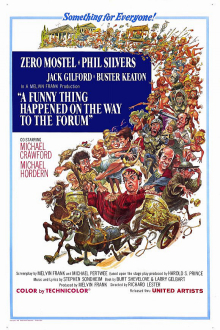
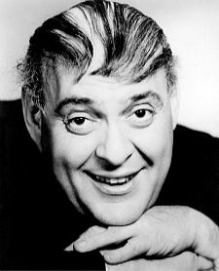
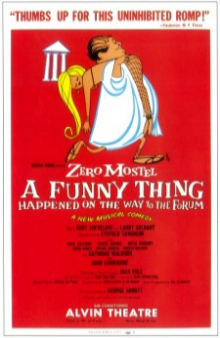
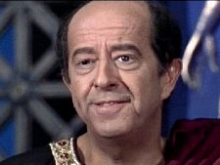
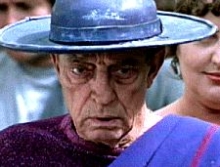
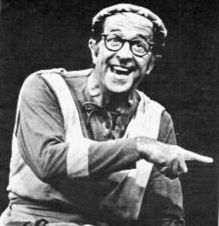
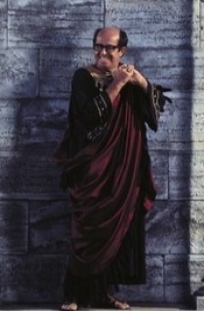
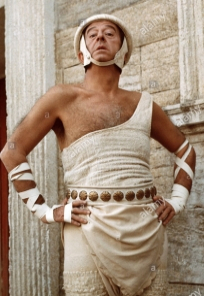
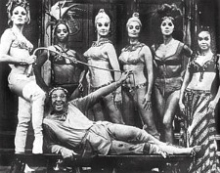
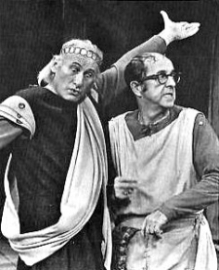
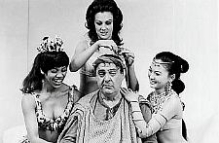
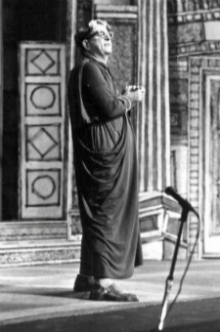
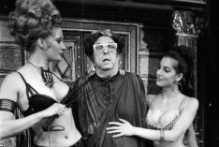
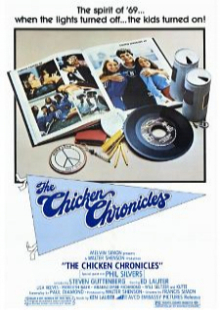
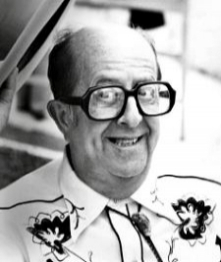
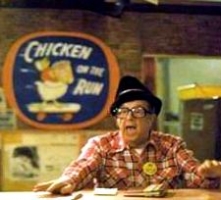
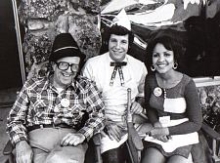
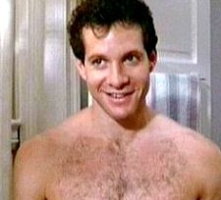
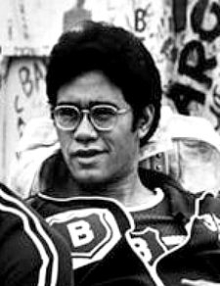
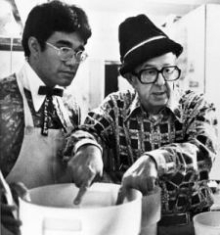
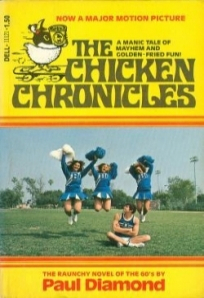
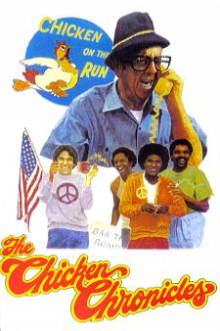
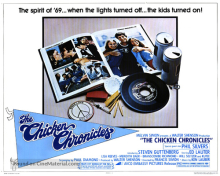
The Chicken Chronicles (1977)
Cast
Phil Silvers......Max Ober
Steve Guttenberg......David Kessler
Branscombe Ricmond......Mark
Clark Brandon......Lee
Peter Bruni......Mr. Sourian
Ed Lauter......Mr. Nastase
Ed Wright......Old Man in Hospital
Ben Marley......Saxon Runner
Lisa Reeves......Margaret
Meredith Baer......Tracy
Raven de la Croix......Mrs. Worth
Will Seltzer......Weinstein
Yvon Arai......Mark's Father
Kutee......Maddy
Gino Baffa......Charlie Kessler
Robert Resnick......Stuart
Robin T. Williams......Vanessa
Jon Gries......Tom
Joe Medalis......Phinney
Directed by......Francis Simon
Produced by......Walter Shenson
Associate Producer......Dan Allingham
Edited by......George Folsey Jnr
A Melvin Simon Presentation
An Avco Embassy Pictures Release
Written by......Paul Diamond
Book by......Paul Diamond
Art Director......Ray Markham
Cinematographer......Matthew Leonetti
Sound by......Carey Lindley
Composer (Music Score)......Ken Laubert
Running Time: 95 Minutes (Released October 1977)
The Chicken Chronicles first came to life as a novel written by author Paul Diamond. Diamond was the son of I. A. L. Diamond, a comedy writer who was know specifically for his working relationship with director Billy Wilder. Diamond Snr., wrote the screenplays for many of Wilder's most popular films including The Apartment (1960), Irma La Douce (1963), The Fortune Cookie (1966) and The Front Page (1974).
The novel was a collection of Paul Diamond's experiences as a young man at high school in the 1960's during the so-called sexual revolution.
Producer Walter Shenson, who produced the two Beatles' films, A Hard Days Night (1964) and Help (1965), liked the book and felt that he could help transform it into a workable film, sensing it might appeal to a younger audience.
With a modest budget in place, the cast and crew were assembled. Candace Silvers attended an audition for a small role in the film. She didn't get the part but she learned that Shenson had yet to cast an actor in the role of Max Ober. The character was the owner/manager of a fast food restaurant where many of the characters in the film either worked or hung out.
Ned Beatty had apparently been considered for the part so Candace immediately suggested that her father, Phil Silvers, would be an ideal choice for the role.
"Walter Shenson, the producer, went to Beverly High to find some kids for the cast." said Phil. "He even interviewed four of my daughters who went to school there."
"Candy asked Shenson why he didn't hire her Dad." said Phil. " Shenson then realised that her name was Silvers and asked if I was her father. He'd never thought of me for the role."
Shenson was initially reluctant to approach Phil, as were many in the industry at that time, because of the problems insuring him due to the stroke that Phil had suffered some years before. Sadly it was a problem that blighted Phil's later career.
However, Shenson agreed to meet with Phil. "Walter Shenson came to see me, probably to make sure I was feeling well. I made him an offer like something out of Bilko." said Phil. "I told him 'Use me and I'll gamble and buy a piece of the picture.' That's just what I did. I got paid less than I give away in tips but I loved it!."
The film saw the debut of actors Steve Guttenberg and Branscombe Richmond. Steve Guttenberg once recalled that working with Phil was "Amazing. I grew up watching Bilko and now here I was working with him, learning from him. He taught us all so much." Co-star Branscombe Richmond said "When we heard that he was playing the part of Max Ober we were all very excited! The stories he told on set. How lucky we were to spend time with him and learn the craft!"
Phil himself, by now the elder statesman of showbusiness, was more than happy to pass on tips and share his experiences. "I know the kids thought at first that I was just a talkative old man (he was 65 at the time). But then they realised that I was advising them for their own benefit!"
Throughout the course of the film Phil found himself surrounded by a host of beautiful young girls including Lisa Reeves, Meredith Baer and Kutee. "Took me right back to my days in burlesque. Right from my early days I was surrounded by glorious girls. I may be old but I'm not dead!"
Filming the movie was something Phil enjoyed enormously. Due to his vast experience as both a comedian and an actor director Francis Simon had no problems with Phil ad-libbing on-set. "The director would give me a rough idea of what he wanted and I'd throw in a line or two here and there." said Phil.
By this time the era of Method acting was in the ascendency - low-budget, independent productions such as Taxi Driver (1976) and Rocky (1976) were littered with scenes that had that ad-libbed feel. Interestingly actor Phil Hartman once described Phil as the ultimate Method actor. "When he played Bilko, it was hard to see where Phil ended and Bilko started!"
Branscombe Richmond was a first-hand witness to Phil's ad-libbing. "I learned a lot from Phil about ad-libbing. It was scary...you just never knew where Phil was going to go with it!"
The experience of filming with Phil is something he remembers to this day. "Phil was great. Steve and I were his 'kids'. It was always 'Hey kid..!" He was great... a consumate professional. There were days when he was tired but that was it."
When interviewed in 1984 Steve Guttenberg remained fiercely proud of having workd on the film. "Some actors get embarrassed about their early work. But we don't all start out as 'artistes'. Nobody is going to confuse The Chicken Chronicles with Citizen Kane, but I learned a lot. They took a chance on me. I didn't get rich from it but it was a start!"
Phil himself had high hopes for the film. "It's going to be as big as Rocky. This film has a heart and a message. I hope it does big business...I own a piece of this picture and it's been a while since I gambled on anything!"
Having suffered the ignominy of rejection over the past few years Phil was glowingly optimistic on both the prospects for the film and a possible up-turn in his career. "It's an hysterically funny movie. I loved every minute of it." he said. "I'm feeling terrific. For a while there I kept running into life's obstacles. But that's all behind me now. I'm fully recovered and looking to the future."
Although the film was not the box office success that all involved hope it would be it, many of the cast members went on to achieve great success.
Steve Guttenberg went on to achieve international fame in films such as The Boys From Brazil (1978), Diner (1982), Police Academy (1984) and Cocoon (1985). His next project is the third instalment in the Three Men And.... series of films, alongside Tom Selleck and Ted Danson.
Bransombe Richmond carved out a successful career as a character actor in such films as Star Trek III: The Search For Spock (1984), Licence To Kill (1989) and most recently Forgetting Sarah Marshall (2009). His television credits include The Six Million Dollar Man, Charlie's Angels, Hart To Hart, The A-Team and Magnum PI. His most notable TV role came in the popular TV series Renegade opposite Lorenzo Lamas, in which he played Bobby Sixkiller.
Ed Lauter, who played Mr. Nastase in the film, has enjoyed a successful career as an actor in films and on television. His film credits include Death Hunt (1981), Cujo (1983), Death Wish 3 (1985), Born On The Fourth Of July (1989), Leaving Las Vegas (1995), Talladega Nights (2006) and Seraphim Falls (2006). His television credits include appearances on Jake & The Fatman, BJ and The Bear, The A-Team, The X-Files, Desperate Housewives and Grey's Anatomy.
Sadly The Chicken Chronicles failed to appeal to audiences and critics alike. One critic said "The Chicken Chronicles could be one of this years sleepers. When this turkey of a film ended four of the theatre's seven patrons had to be prodded before awakening!"
Critic Bob Ross was slightly kinder when he mused "A few giggles are available but they are buried in a blizzard of comic cliches, strung together without regard to continuity or meaning!" He did however hold praise for at least one aspect of the film. "Veteran comic Phil Silvers saves the picture from complete uselessness with his typically Bilko-esque portrayal of a demented chicken vendor!"
Ice-Capades of 1941 (1941)
Cast
James Ellison...Bob Clemens
Jerry Colonna...Colonna
Dorothy Lewis...Marie Bergin
Barbara Jo Allen...Vera Vague
Alan Mowbray...Pete Ellis
Phil Silvers... Larry 'Breezy' Herman
Gus Schilling...Dave
Tim Ryan... Jackson
Harry Clark...Reed
Renie Riano...Karen Vadja
Carol Adams...Helen
Lois Dworshak... Ice-Capades Skater
Megan Taylor.... Ice-Capades Skater
Vera Ralston (Vera Hruba)...Ice-Capades Skater
Red McCarthy...Ice-Capades Skater
Phil Taylor....Ice-Capades Skater
Joe Jackson Jr....Tramp Bicycle Act
Al Surette...The Straw Man
Directed by Joseph Santley
Written by Isabel Dawn and Boyce DeGaw
Screenplay by Jack Townley, Robert Harari and Olive Cooper
Produced by Robert North
Cinematography by Jack A. Marta
Film Editing by Howard O'Neill
Art Direction by John Victor Mackay
Costume Design by Adele Palmer
Production Management Al Wilson
Stunts Joe Yrigoyen
Musical Director Cy Feuer
Running Time: 88mins (trimmed to 67mins for the 1950 re-release)
A Republic Pictures Production
The Ice Capades was a traveling entertainment show, founded in the USA in 1940, and featured theatrical performances involving the sport of ice-skating. The shows often featured former Olympic and Champion skaters who had retired from the competition arena.
Although he was under contract to MGM, Phil was loaned out to Republic Pictures when he was offered the role of Larry 'Breezy' Herman, a fast-talking promoter with an eye on the main chance.
Republic Pictures were an independent film production/distribution outfit with their own studio facilities. They were well-known for their westerns and movie serials and their array of stars on the roster included John Wayne, Roy Rogers and Gene Autry, Ice-Capades of 1941 was something of a departure from the usual B-movie fare. The working titles of the film were Icecapades of 1941 and Ice-Capades of 1942. The studio eventually settled on an amalgam of the two.
Harry Clark, Phil's co-star from The Phil Silvers Show (Harry of course played Sgt.Sowici) also appeared in the film. Phil's friend, composer Jule Styne, wrote the song Forever And Ever for the film. He would of course work with Phil again on Broadway with the musicals High Button Shoes and Do Re Mi (he also appeared on The Phil Silvers Show).
The film marked the screen debut of Vera Hruba, a Czech ice skater whose surname was misspelt as 'Rhuba' in the films credits. When the film was re-released in 1949 with the title Music In The Moonlight, she was bliied as 'Vera Ralston', the stage-name she adopted in 1946.
For a time she became Republic's answer to 20th Century Fox's Sonja Heine. The studios tried to turn her into a straight dramatic actress but sadly the public simply didn't warm to her as an actress. She married the studio head, Herbert John Yates in 1952 and after her final film for Republic Pictures in 1958 she retired from acting.
Former champion skater Belita, one of the stars of the Ice-Capades touring company, was set to star in the picture. However, due to a break-down in contractual negotiations she was replaced by fellow skater Dorothy Lewis. In an about-face Belita agreed to appear in the picture, but by that time much of the filming of the skating sequences had been completed and she eventually appeared in a specially filmed routine.
As well as the wealth of acting talent involved on the film the film made use of several of the period's great songsmiths, including the aforementioned Jule Styne and the great Duke ellington.
Musical director Cy Feuer was nominated for an Academy Award for Best Music (Scoring of a Musical Picture). The film was a reasonable success and prompted Republic to make another film Ice-Capades Revue, released in 1942.
